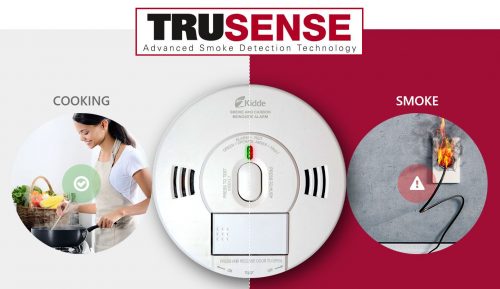This blog post was written by Seattle home inspector Charles Buell and was originally posted on his website on 1/17/2020.
The UL 217 standard for home smoke alarms has not changed very much since it started in 1976. The most recent adjustment (and significant adjustment) to this standard was published in 2015 and again on January 2, 2020. All smoke alarms manufactured after June 1st, 2021 will be required to meet this standard. They will be more responsive to multiple types of fire scenarios and help reduce some of the shortcomings of current alarms.
While this post started out as an announcement of the adoption of the new standard and the availability of new life-saving technology, it turned out to be a bit more complicated as manufacturers seem to have dragged their feet in ways that have repeatedly put off implementation of the standard.
The move to improving the function of smoke alarms started with the 2015 UL 217, 8th Edition, but only one manufacturer has been approved under the new standard. There was also the problem of UL having to build a whole new facility to do the testing in. The new UL 217 is Edition 9 and may cause yet another push out of the effective date as manufacturers scramble to comply with Edition 9. Kidde’s UL 217, 8th Edition approved model will now have to be retested to make sure it complies with Edition 9 that just came out.
Note from Reuben: the new smoke alarm that complies with UL 217 8th Edition is the TruSense made by Kidde. The manufacturer says it has a new ‘optical’ sensor, but I’ve been told by industry insiders that this is simply a fancy term for multiple photoelectric sensors.
So what has the new standard made better?
Nuisance tripping related to cooking has been addressed, and they are now more sensitive to smoldering types of fires related to synthetic materials in modern homes.
The new technology will also allow for Combination Smoke/CO Alarms—something that was problematic with old technology alarms.
Does the confusion or apparent foot-dragging really matter?
Well of course it matters, and the fact that it is taking so long to get available technology in place is nothing but a shame.
For the home inspector, this amounts to quite a dilemma, because I am sure there will be builders installing the old technology alarms on May 28th, 2021. With a 10 year life, the house will not likely see the new technology until 2031. Considering the technology has been available since 2015, and some alarms that complied with this standard since 2019, that amounts to several years of preventable deaths.
Note from Reuben: not only that, but the existing inventory of old smoke alarms can still be sold and installed. The old smoke alarms will be around for a long time after the new standard takes effect.
While it will be some time before current stocks are sold, I personally do not recommend purchasing anything that does not have the new listing. I will do my part to make sure none of the old technology alarms leave the stores. I love tilting at windmills.
If new technology alarms cannot be found, the best practice is to use photoelectric type alarms which approach 95% as good as the new technology. This is what the new ones are basically anyway.
The Kidde TruSense alarms can be found in home improvement stores and online. The packaging will carry a label that looks something like the one below.
While these alarms do not likely meet UL 217 9th Edition, they do at least meet UL 217, 8th Edition and are a better choice than old technology ionization alarms that are currently available. Another conundrum, in some states you can buy older alarms but cannot legally install them.
For me, I will be recommending replacement/installation (even at the current date) of any alarm that is not the new technology—other than photoelectric type alarms. I will not be waiting until the arbitrary date of June 1st, 2021 when conditions somehow mysteriously and magically get worse. The physics do not change.
We have the technology now, let’s make our homes safer now—ahead of schedule.
Charles Buell, Real Estate Inspections in Seattle
One more note from Reuben: here at Structure Tech, we’ll be making the same recommendation. Either upgrade to photoelectric smoke alarms or TruSense smoke alarms.
Related link: Which Smoke Alarm to Buy



Randy Moe
February 4, 2020, 12:16 pm
Thank you!
My 1920 home needs the best possible tech.
Dante
February 4, 2020, 6:53 pm
I don’t understand why Kidde put its best technology into a unit which cannot be interlinked to others and does not also detect CO. It’s a head scratcher. Toyota puts its top technology first in Lexus, not the Corolla.